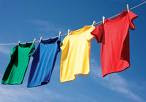 In an emergency situation, clean, drinkable water is often the most important factor to consider. Our bodies are 60% to 70% water. The water content of our brains is over 80%. Each day, through natural elimination, breathing and evaporation through the skin, we lose 1 1/2 to 2 quarts of water. That's without hard work, excessive heat or anything else that would cause extra water loss. A person can die from lack of water in as little as 2 days in extreme heat conditions.
In an emergency situation, clean, drinkable water is often the most important factor to consider. Our bodies are 60% to 70% water. The water content of our brains is over 80%. Each day, through natural elimination, breathing and evaporation through the skin, we lose 1 1/2 to 2 quarts of water. That's without hard work, excessive heat or anything else that would cause extra water loss. A person can die from lack of water in as little as 2 days in extreme heat conditions.Any number of emergencies can cut off our water supply. Flooding, even if it does not affect your home, contaminates the water tables and supplies where your water may come from. Tornadoes, hurricanes, fires, biological contamination, earthquakes and power outages can all stop or damage the water supply you depend on.
The best thing we can do is to prepare ahead of time. Every home should have emergency water containers filled and properly stored. The average rule of thumb is to store 1 gallon of water per person per day and have a 2 week supply - so 14 gallons for each person. On the average we should drink about 2 quarts a day, but also need to allow for cooking or other food preparation and very basic hygiene. The more you can store, the better.
2 liter bottles are good storage containers. Glass containers have the lowest danger of contamination but are heavier if you have to carry them and have the danger of breaking. You can get large water storage barrels through many on-line sources or sometime
If you know that your water source will be gone for some reason, like flood waters rising, or have been informed that the municipal water facility has been damaged or contaminated, take immediate action to collect as much water as possible. The bathtub holds about 30 gallons of water. Fill it up. Fill every bottle, pitcher, bucket and container you can find.
Once your water supply has been cut off, you also have access to other water that is naturally stored in your home. First you should shut off the main water intake to your home to keep contaminated water from coming in. Then you can safely access the water in your home plumbing system. Your water heater is a great source. Turn off the pilot light so the water won't heat up and open the drain valve at the bottom to collect water as you need it. If you have a multiple level home, open a faucet on the top level to allow air flow, then go to the bottom level and turn on a faucet to collect the water that is in your pipes. You can also scoop the water out of your toilet tank - not the bowl! If you have tablets or some other cleaning product in the tank, you will not be able to use that water. Don't forget your ice cubes in the freezer, and any canned foods you have can contain a lot of liquid, too.
Think ahead, do what you can do now, know what to do when an emergency comes, and be prepared. It can mean your comfort, or your life!







